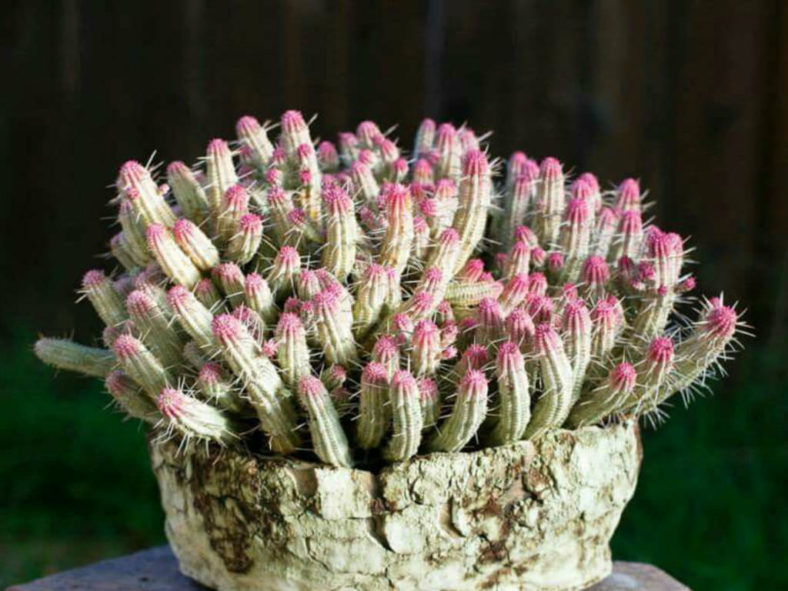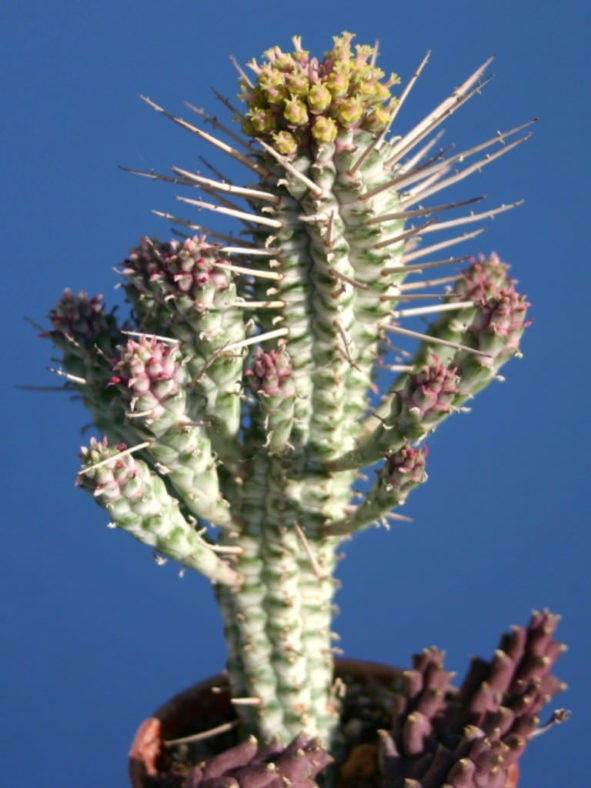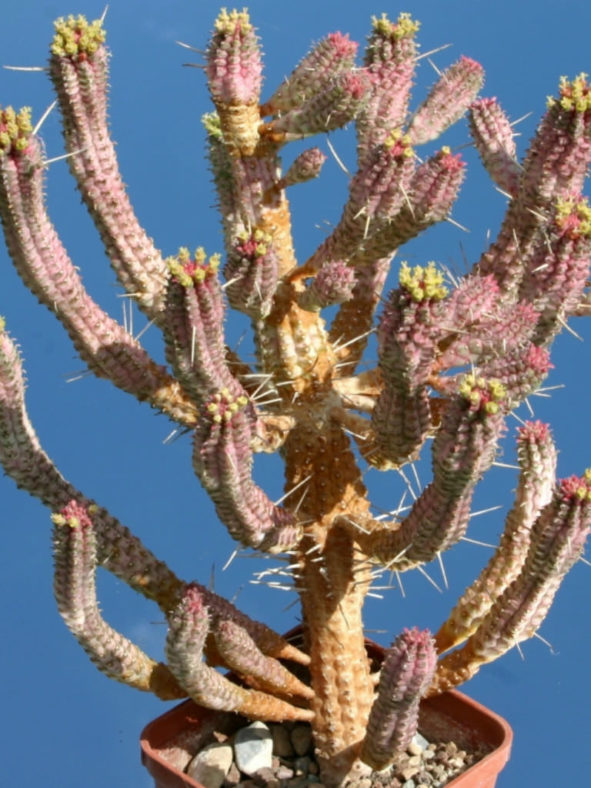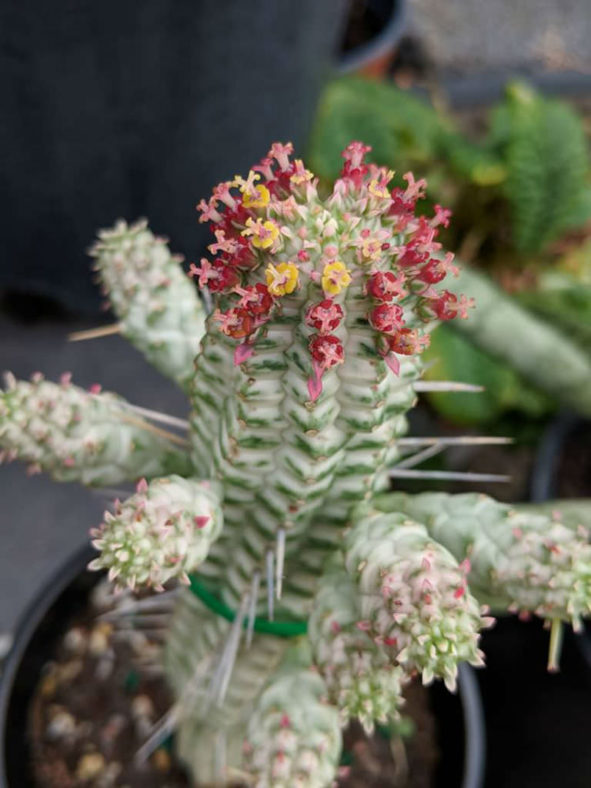Scientific Name
Euphorbia mammillaris f. variegata
Accepted Scientific Name
Euphorbia mammillaris L.
Common Name(s)
Indian Corn Cob
Synonym(s)
Euphorbia mammillaris f. alba
Scientific Classification
Family: Euphorbiaceae
Subfamily: Euphorbioideae
Tribe: Euphorbieae
Subtribe: Euphorbiinae
Genus: Euphorbia
Etymology
The formal epithet "variegata" (pronounced "var-ee-GAY-tuh") means "variegated; having a pattern of different colors or marks" and refers to the variegated stems and leaves of this form.
Origin
Euphorbia mammillaris f. variegata is a variegated form of Euphorbia mammillaris.
Description
Euphorbia mammillaris f. variegata is an attractive succulent easily recognized by its stems, which are subtle cream to frosty greenish-white and splashed with emerald green. Usually, there are stems with many lateral, club-like branches. The stems have 7 to 15 ribs and can grow up to 14 inches (35 cm) tall and 2.4 inches (6 cm) in diameter. In cold temperatures, they become flushed with a delicate rose color. The spines are actually hardened, sterile peduncles. They are occasionally present and scattered, whitish, measuring up to 0.4 inches (1 cm) long. The leaves are small, variegated, and short-lived.
From late winter to early summer, Euphorbia mammillaris f. variegata produces yellow, solitary cyathia at the tips of the stems.

How to Grow and Care for Euphorbia mammillaris f. variegata
Hardiness: USDA hardiness zones 9a to 11b: from 20°F (-6.7°C) to 50°F (10°C).
Euphorbias are very easy to care for. These plants require a little pampering to become established, but once they are, they are self-sufficient. More die from overcare and watering than from neglect. Euphorbias need well-draining soil and lots of sunlight. They are not particular about soil pH, but cannot tolerate wet soil. Unlike most succulents, Euphorbia do not handle long periods of drought well. It may need weekly watering during the summer. Water whenever the top few inches of soil are dry. Water the plants deeply, but avoid letting them sit in wet soil, as this can cause root rot. Add some organic matter or fertilizer to the planting hole. Feed with a half-strength fertilizer monthly if you are growing them in containers or your soil is poor.
These succulents can be grown from seed, but germination can be challenging, and they may be difficult to find. They are usually propagated by cuttings, which can be tricky because of the exuding sap. Rooting hormone is recommended with Euphorbia. They tend to grow problem-free, but there are a few pests and diseases to be alert for.
Learn more at How to Grow and Care for Euphorbia.
Links
- Back to genus Euphorbia
- Succupedia: Browse succulents by Scientific Name, Common Name, Genus, Family, USDA Hardiness Zone, Origin, or cacti by Genus
Photo Gallery
Click on a photo to see a larger version.


